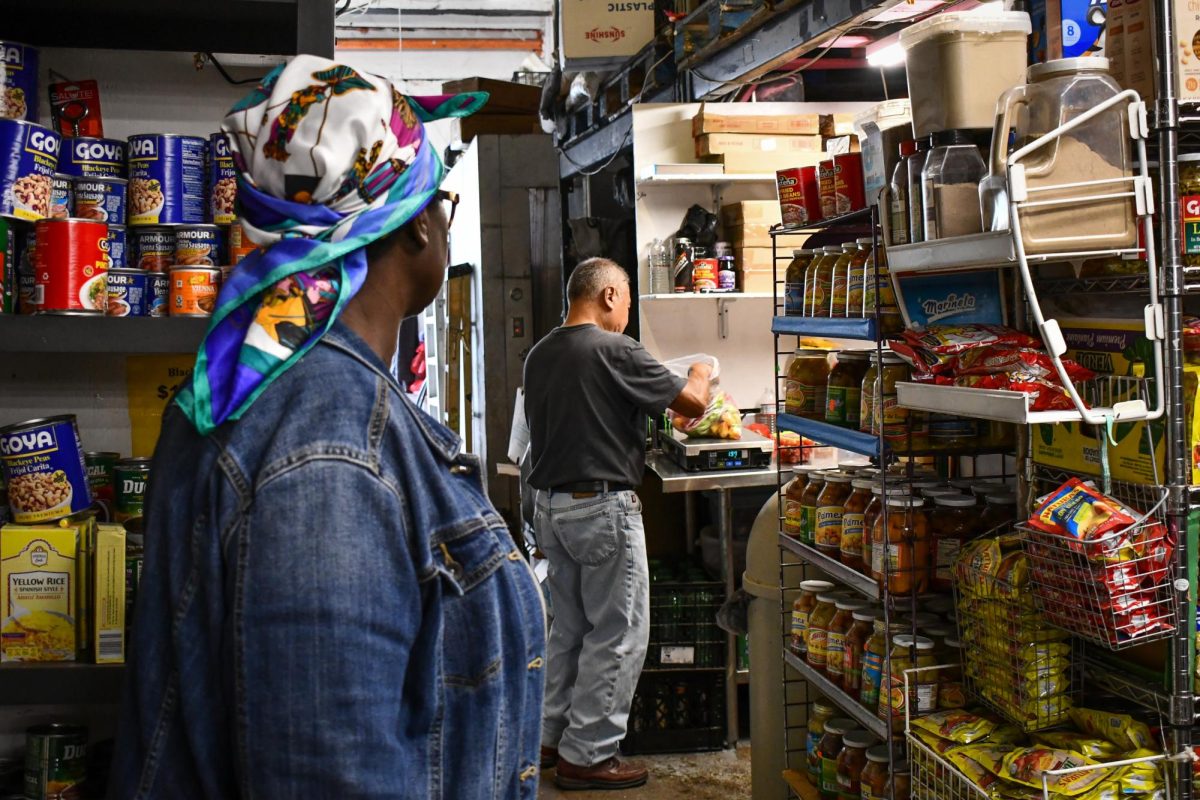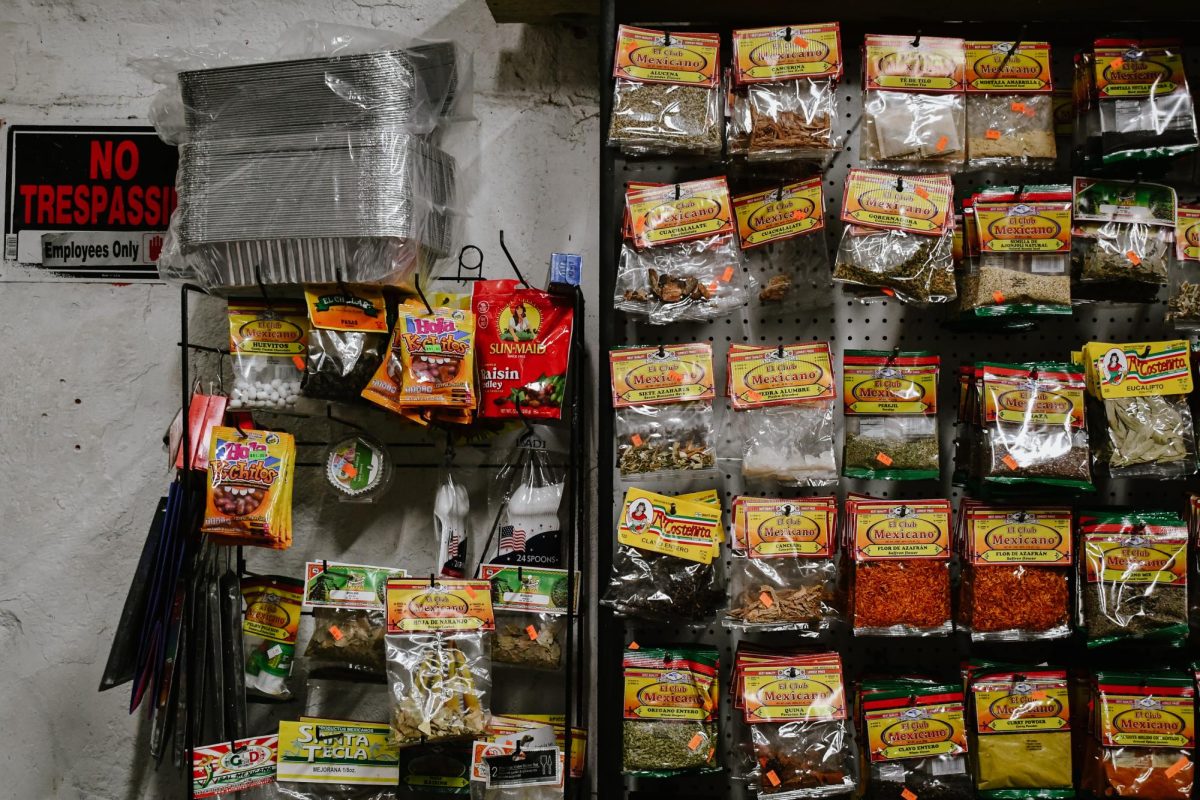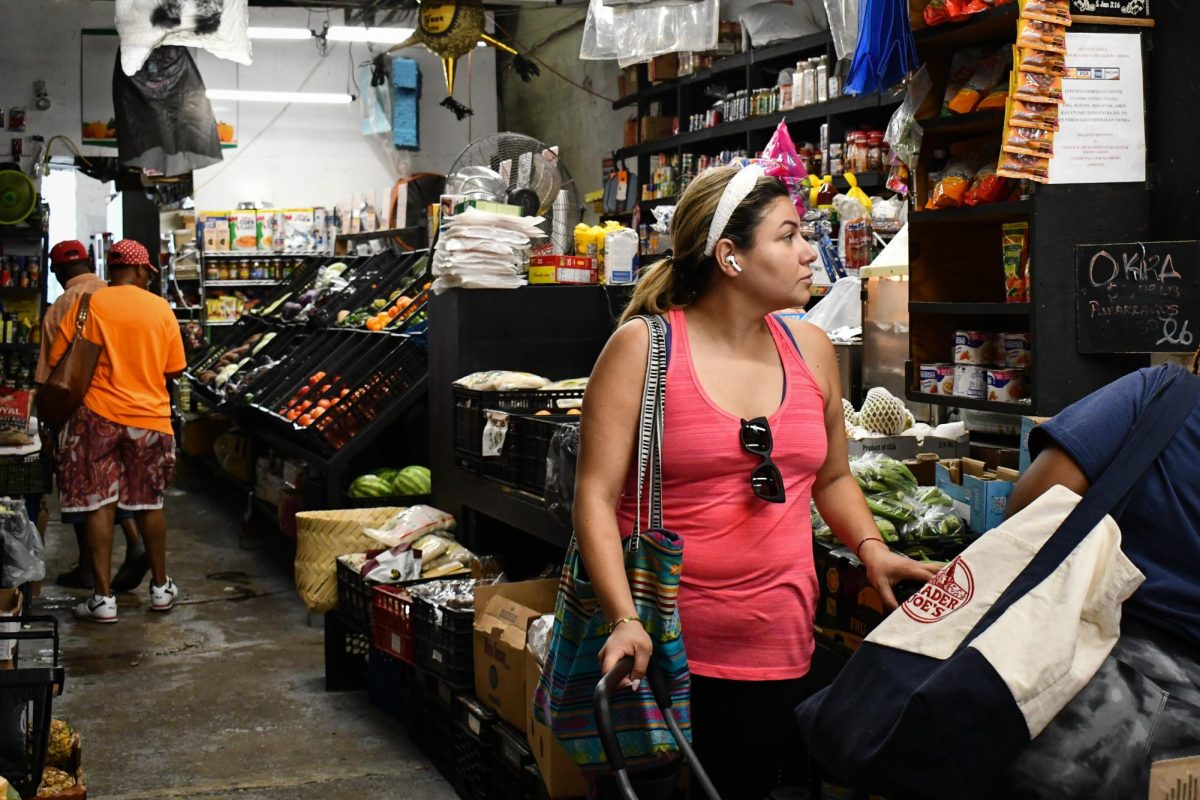Senior Nareg Panossian often craves the Armenian yogurt drink, tan, for its sour-yet-salty fermented flavor and its refreshing electrolytes, ideal for a hot summer day.
But it’s not a beverage he can purchase from local grocery stores like Trader Joe’s or Whole Foods. Like other GW students searching for a taste of home or looking to expand their palates, Panossian ventures beyond the confines of campus for his desired grocery picks, making his way to off-campus cultural markets for foods that connect him with his Armenian culture.
Boarding a Metro train for an hour-long ride from campus, Panossian treks to Rockville, Maryland, to peruse the aisles of Asadur’s Market, an Armenian and Mediterranean grocery shop, always leaving with a bottle of tan in hand. Panossian said a friend recommended Asadur’s to him during his first year at GW, and the neatly organized aisles of the market are what you’d expect grocery stores to look like when they were first invented: a lack of branding or specific designs, a speciality cheese counter and a cozy atmosphere with shop workers chatting with regulars.
“I’ve been able to find most of the stuff I’m used to eating there,” he said.
Panossian, who grew up in an Armenian-Lebanese family, said he enjoys sharing Armenian foods with his friends from other cultural backgrounds because it introduces them to a cuisine they might not otherwise try. After introducing them to their first sips of tan, he said he gets particular enjoyment from watching their faces turn from excitement to a grimace in response to the often unexpected flavor profile.
“A lot of people really hate it the first time they try it, so it’s always kind of funny to see their reaction,” Panossian said. “It’s kind of salty and people aren’t expecting it. But it’s one of my favorite drinks, so I like introducing it to people.”
Beyond getting a good chuckle from his friends’ sour-drink-induced grimace, Panossian said access to traditional Armenian ingredients from the grocery store helped smoothen his transition to college from New Jersey and connect him with his Armenian-Lebanese heritage by giving him access to food that reminds him of home, like the grain bulgur, used in the Armenian salad eech and Arabic coffee, which is mixed with cardamom.
“Food is a big part of cultural identity,” Panossian said. “So definitely having access to those sorts of ingredients and food is big because you go to the dining hall, and they try with their ethnic options, but it’s not going to compare to your mom’s cooking. So it’s really comforting to be able to make something you’re used to eating.”
In addition to those ingredients, Panossian said his hauls typically include za’atar, feta, labneh, tan and Armenian snacks. He said one of his favorite Armenian dishes to make — mulukhiyah, which he describes as a chicken stew — requires the mulukhiyah vegetable, a leafy, bitter ingredient that shoppers can only find at Middle Eastern grocery stores. Panossian said incorporating ingredients like these into his meals always transport him back to his childhood, even as he prepares dishes from his college apartment.
“It’s very nostalgic for me because my mom would always make it,” Panossian said.
Emme Seeley, a junior majoring in Asian Studies, said she frequents Safeway on a weekly basis but makes monthly trips to H Mart in Annandale, Virginia, a Korean grocery store that is just over an hour away from Foggy Bottom by Metro.
She said when she ventures to H Mart, she is sure to stock up on the grocery store’s variety of brands of instant noodles — there’s an entire aisle dedicated to it, after all — Asian pears, dragon fruit, passion fruit, Pocky, kimchi and a chocolate-covered cookie called binch. Seeley said H Mart contains a wider selection of Korean foods that she could not find at Safeway. The Safeway in Georgetown carries primarily frozen or bulk commodity Korean foods like boxed chocolates and chili sauce.
She said she has always loved preparing Korean dishes, fried rice especially, and wanted to browse H Mart’s aisles for high-quality and affordable ingredients like sesame oil and soy sauce for her concoctions.
“The supply that they have is definitely better than like the normal grocery store because it’s like mostly the people that go there are Korean,” she said.
Rami Hanash Jr., a senior majoring in marketing, said he likes making grocery runs to Hana Japanese Market in Adams Morgan, a 30-minute walk north of campus. Hanash said the store reminds him of the cluttered interior of the GW Deli — but if all of the scattered inventory was imported from Japan. He said the store carries affordable and tasty ramen like Nissin RAOH Instant Ramen, which he is always sure to leave with.
“Those noodles are so good,” Hanash said. “I got this spicy sriracha noodle or something like that, and I love getting the spicy noodle flavors.”
Hanash said one of the shop’s workers has visited Japan and saw the noodles that are in stock at Hana in grocery stores. He said the worker told him while the quality of noodles at Hana are great by standards in America — where stores reliably stock instant Top Ramen — those same noodles are only lackluster compared to what he ate overseas. Hanash said the market helps push him out of his comfort zone and experience new culinary delights.
“I think it’s cool to just go up there and try new things,” he said.

Kareem Aly, a senior majoring in international affairs, said he frequents Mexican Fruits, a produce-centric grocer near Union Market just over 30 minutes from campus via Metro, for his groceries. He said Mexican Fruits offers a wide selection of affordable produce — specifically varieties of mangoes and limes — freshly made bread, beans and $2 fresh hot tamales on Sundays to choose from.
“You’re getting usually a lot more bang for your buck,” Aly said. “And there’s a lot of bulk items you can get from there. It kind of reminds me of Costco where you can just buy a lot of things in bulk.”
He said he often noticed the shop on a couple excursions to Union Market — which is adjacent to the bright blue exterior and racks of produce outside Mexican Fruits — as a first year and a sophomore and thought, “Oh, that’s cool I guess.” But he said it wasn’t until he moved closer to the location that he finally gave the grocery store a whirl because he needed a cheap, convenient market.
“Since moving here, I’ve definitely been shopping there more because I just needed a cheaper place,” he said.

Aly said Mexican Fruits has the feel of a local shop with paper signs labeling the foods and prices plastered to the walls and a diverse community shopping inside. He said the wide array of ingredients from corn meal to spices allows him to branch out into cooking new dishes like cheese and beef arepas, a stuffed Venezuelan corn meal cake.
Aly said exposure to grocery stores with a more culturally diverse selection of food has expanded his palate and ability to Remy-it-up with new cuisines like the arepas he makes — something that wasn’t possible or affordable at the likes of Whole Foods due to the grocery store’s relative lack of variety.
“I’m able to now get more diverse goods than I was able to previously at Whole Foods, so now I have a lot more room for creativity in my recipes and just trying out new cuisines,” he said. “It’s been a great process trying new food and making new food.”








